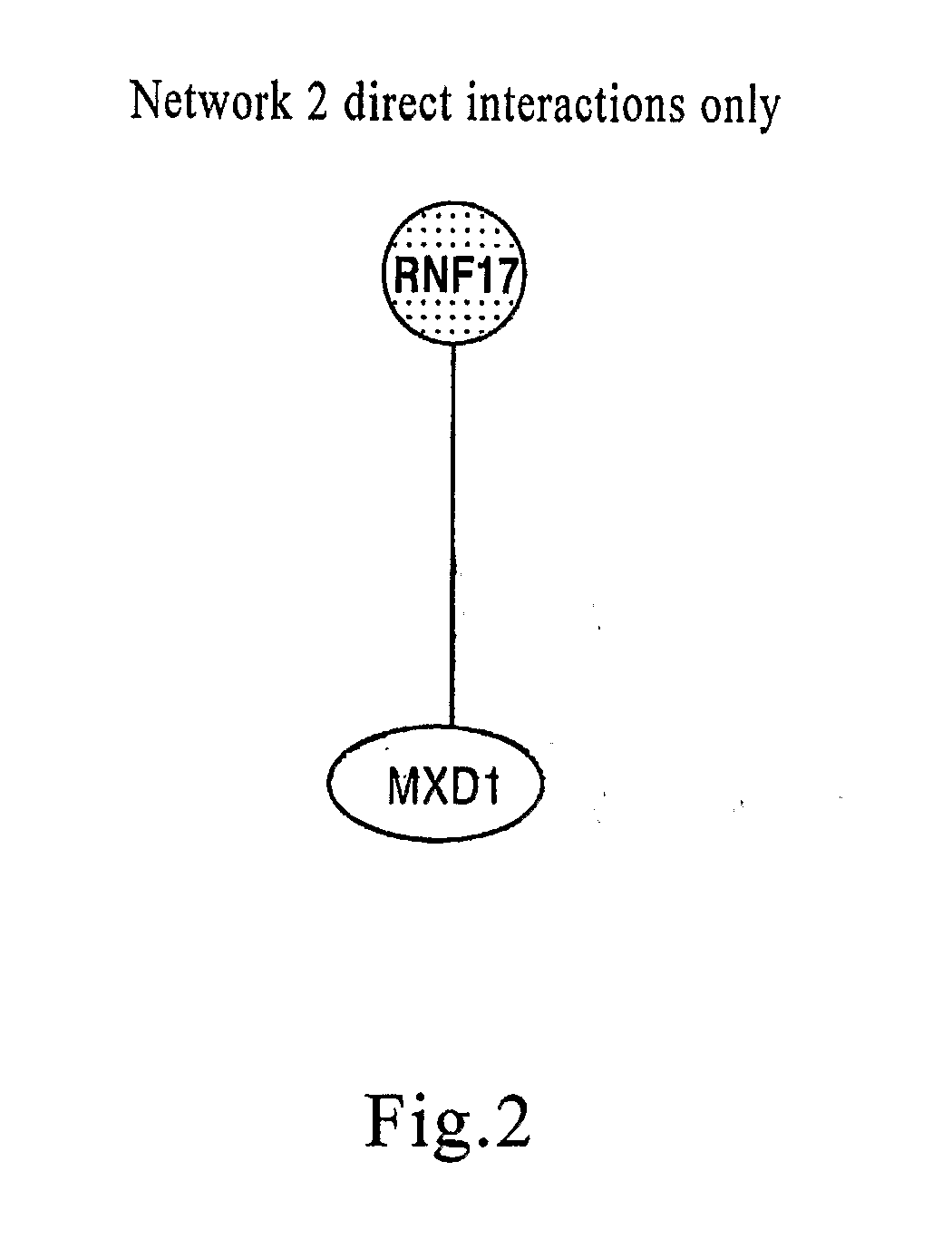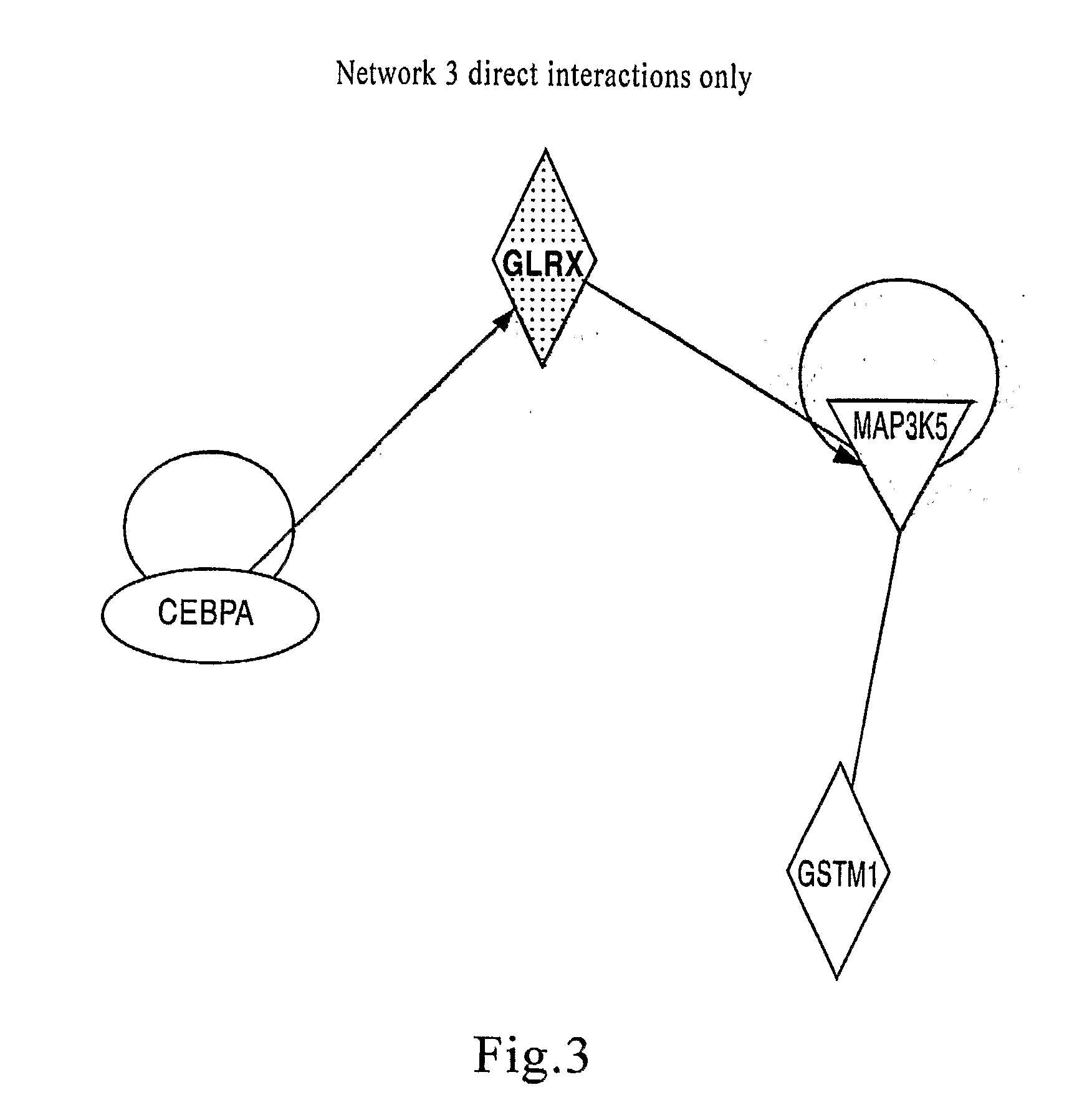Genemap of the human genes associated with psoriasis
- Summary
- Abstract
- Description
- Claims
- Application Information
AI Technical Summary
Problems solved by technology
Method used
Image
Examples
example 1
Identification of Cases and Controls
[0255]All individuals were sampled from the Quebec founder population (QFP). Membership in the founder population was defined as having four grandparents with French Canadian family names who were born in the Province of Quebec, Canada or in adjacent areas of the Provinces of New Brunswick and Ontario or in New England or New York State. The Quebec founder population has two distinct advantages over general populations for LD mapping. Because it is relatively young, about 12 to 15 generations from the mid 17th century to the present, and because it has a limited but sufficient number of founders, approximately 2600 effective founders (Charbonneau et al. 1987), the Quebec population is characterized both by extended LD and by decreased genetic heterogeneity. The increased extent of LD allows the detection of disease genes using a reasonable marker density, while still allowing the increased meiotic resolution of population-based mapping. The number...
example 2
Genome Wide Association
[0260]Genotyping was performed using Perlegen's ultra-high-throughput platform. Loci of interest were amplified and hybridized to wafers containing arrays of oligonucleotides. Allele discrimination was performed through allele-specific hybridization. In total, 80,654 SNPs, with a variable density adjusted to the extent of local LD, were genotyped on the 500 trios for a total of 97,994,610 genotypes. This set of markers constitutes the QLDM (Quebec LD Map), a map created specifically for the Quebec founder population. Briefly, it possesses a base density of one marker per 40 kb and up to one marker per 10 kb in low-LD regions, the lower the LD is in a given area, the higher the marker density will be. The markers were selected from various databases including the ˜1.6 million SNP database of Perlegen Life Sciences (Patil, 2001), the hapmap consortium database and dbSNP at NCBI. The SNPs were chosen to maximize uniformity of genetic coverage and as much as possi...
example 3
[0262]1. Dataset Quality Assessment
[0263]Prior to performing any analysis, the dataset from the GWS was verified for completeness of the trios. The program GGFileMod removed any trios with abnormal structure or missing individuals (e.g. trios without a proband, duos, singletons, etc.), and calculated the total number of complete trios in the dataset. The trios were also tested to make sure that no subjects within the cohort were related more closely than second cousins (6 meiotic steps).
[0264]Subsequently, the program DataCheck2.1 was used to calculate the following statistics per marker and per family:[0265]Minor allele frequency (MAF) for each marker;[0266]Missing values for each marker and family;[0267]Hardy Weinberg Equilibrium for each marker; and[0268]Mendelian segregation error rate.
[0269]The following acceptance criteria were applied for internal analysis purposes:
[0270]MAF>10%; Missing values<5%; Observed non-Mendelian segregation<1%; and Allele frequencies ...
PUM
| Property | Measurement | Unit |
|---|---|---|
| Fraction | aaaaa | aaaaa |
| Electrical resistance | aaaaa | aaaaa |
| Elongation | aaaaa | aaaaa |
Abstract
Description
Claims
Application Information
 Login to View More
Login to View More - R&D
- Intellectual Property
- Life Sciences
- Materials
- Tech Scout
- Unparalleled Data Quality
- Higher Quality Content
- 60% Fewer Hallucinations
Browse by: Latest US Patents, China's latest patents, Technical Efficacy Thesaurus, Application Domain, Technology Topic, Popular Technical Reports.
© 2025 PatSnap. All rights reserved.Legal|Privacy policy|Modern Slavery Act Transparency Statement|Sitemap|About US| Contact US: help@patsnap.com



